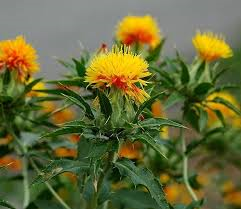Safflower growing degree days in different temperature regimes
Keywords:
Developmental stages, Growing degree day, Planting date, Safflower, Seed yieldAbstract
The plant growth and development are affected by many environmental factors, but the air temperature is the most effective one. During growing season plants accumulate growing degree days (GDD) or heat unit to complete a growth stage. Therefore, the GDD or HU is more accurate for prediction of developmental stages than number of days for different environmental and planting date. A field experiment was conducted in 2007-2008 at Kabotarabad Agricultural Research Station of Isfahan. Eight planting dates (March 5, March 20, April 3, April 18, May 4, May 19, June 5, and June 22) and three safflower cultivars (Arak, Sofea and Goldasht) were evaluated, using a randomized complete block design with split- plot layout in six replications. Dates of planting were considered as the main plot and cultivars were randomized in the sub-plots. Date of planting significantly affected number of days and GDD of developmental stages and seed yield. Delay in planting until seven planting date reduced seed yield and length of planting to emergence, emergence to head visible, emergence to flowering, emergence to ripening, planting to ripening and seed yield. These traits increased a little in eight planting date but GDD of these stages did not show any specific trend. Cultivars significantly affected developmental stages duration and related GDD. Sofeh and Goldasht were the latest and earliest cultivars, respectively. There was no significant difference among seed yield of cultivars.
References
Dadashi, N., Khajehpour, M.R., 2004. Effects of temperature and day length on developmental stages of safflower genotypes under field conditions. J. Sci. Technol. Agric. Natur. Resour., 7, 83-102(in Farsi).
Zand, A., 1985. Basis of morphological and physiological of yield difference in safflower. MSc Thesis in agronomy. Mashhad University.
Shahsavari, M.R., Yasari, T., Omidi, A.H., 2012. Effects of planting date on developmental stages and some agronomic traits of spring safflower varieties. Iran. J. Field Crop. Res., Vol. 10, No. 2. 392-400.
Yasari, T., Shahsavari, M.R., Barzeagarand, B., Omidi, A.H., 1995. Study of developmental stages and relationship between of them and seed yield in ten advanced safflower genotypes. Pajouhesh-va-Sazandeg., 18, 3. 75-83.
Cho, M.H., Tae, R.H., 1995. Effects of planting date on yield I. 2000; Purification and Characterization Decarboxylase from the yellow Petals of Charthamustinctorius L. Arch. Biochem. Bio phys., 382, 238-244.
Delavega, A., Hall, A.J., 2002. Effects of planting date, genotypes and their interactions on sunflower yield: II. Crop. Sci., 42, 1202-1210.
Emami, T., Naseri, R., Falahi, H., Kazemi, E., 2011. Response of yield, yield component and oil content of safflower (cv Sina) to planting date and plant spacing on row in rainfed conditions of Iran. Amer.Euras. J. Agr. Env. Sci., 10 (10), 947-953.
Froozan, K., 2005. Safflower Production in Iran (Past, Now, Future). 2005. pp: 255-257. Paper presented at the Sixth International Safflower Conference, June 6-10. 2005. Istanbul, Turkey.
Gilmore, E.J. and, J.S. Rogers. 1985; Heat unit as method of measuring maturity in corn. Agron. J., 50, 611-615.
Mundel, H.H., Morrison, R.J., Blackshaw, R.E., Entz, T., Roth, B.T., Gaudiel, R., Kiehn, F., 1994. Seeding-date effect on yield, quality and maturity of safflower. Can. J. Plant Sci., 75, 329-431.
Nickabadi, S., Solemani, A., Dehbashti, S.M., Yazdanibakhsh, M., 2008. Effect of sowing date on yield and yield components of spring safflower (Carthamus tinctorius L.) in Isfahan Region. Pakistan J. biology. Sci., 11, 1953-1956.
Omidi, A.H., Sharifmogdas, M.R., 2010. Evaluation of Iranian Safflower cultivars reaction to different sowing dates and plant densities. World Appl. Sci. J., 8(8), 953-958
Pandya, N.K., Gupta, S.C., Nagada, A.K., 1996. Path analysis of some yield contributing traits in safflower. Crop. Res. Hisar., 11, 313-318.
Rohini, V.K., Sankora, K.R., 2000. Emryo transformation, a practical approach for releasing transgenetic plant of safflower (Carthamus tinctorius L.). Annal. Botony., 86, 1043-1049.
Oke, T.R., 1978. Boundary Layer Climate. London, Mrthuen and Coltd. A Halsted press book, John Wiley and Sons New York.
Sediqi, M.N., 2012. Adaptabilty of oilseed species at high altitudes of Colorado and technology transfer to Afghanistan. Master of Science degree. Colorado State University, Fort Collins, Colorado. Summer, 2012.
Shaykewhich, C.F., 1995. An appraisal of cereal crop phonology modeling. Can. J. Plant Sci.
Weiss, E.A., 2000. Oilseed Crops. Black Well Sci. Ltd.
Zheng, N.C., Futtang, C., Xinchum, S., Yanaci, W.,1993. Path analysis of correlated characters on flower yield and safflower. Third Int. Safflower Conf. Bijing, China. 582-588.

Published
How to Cite
Issue
Section
Copyright (c) 2014 Talat Yasari, Mohammadreza Shahsavari, Moslehedien Rezaei

This work is licensed under a Creative Commons Attribution-NonCommercial-NoDerivatives 4.0 International License.



